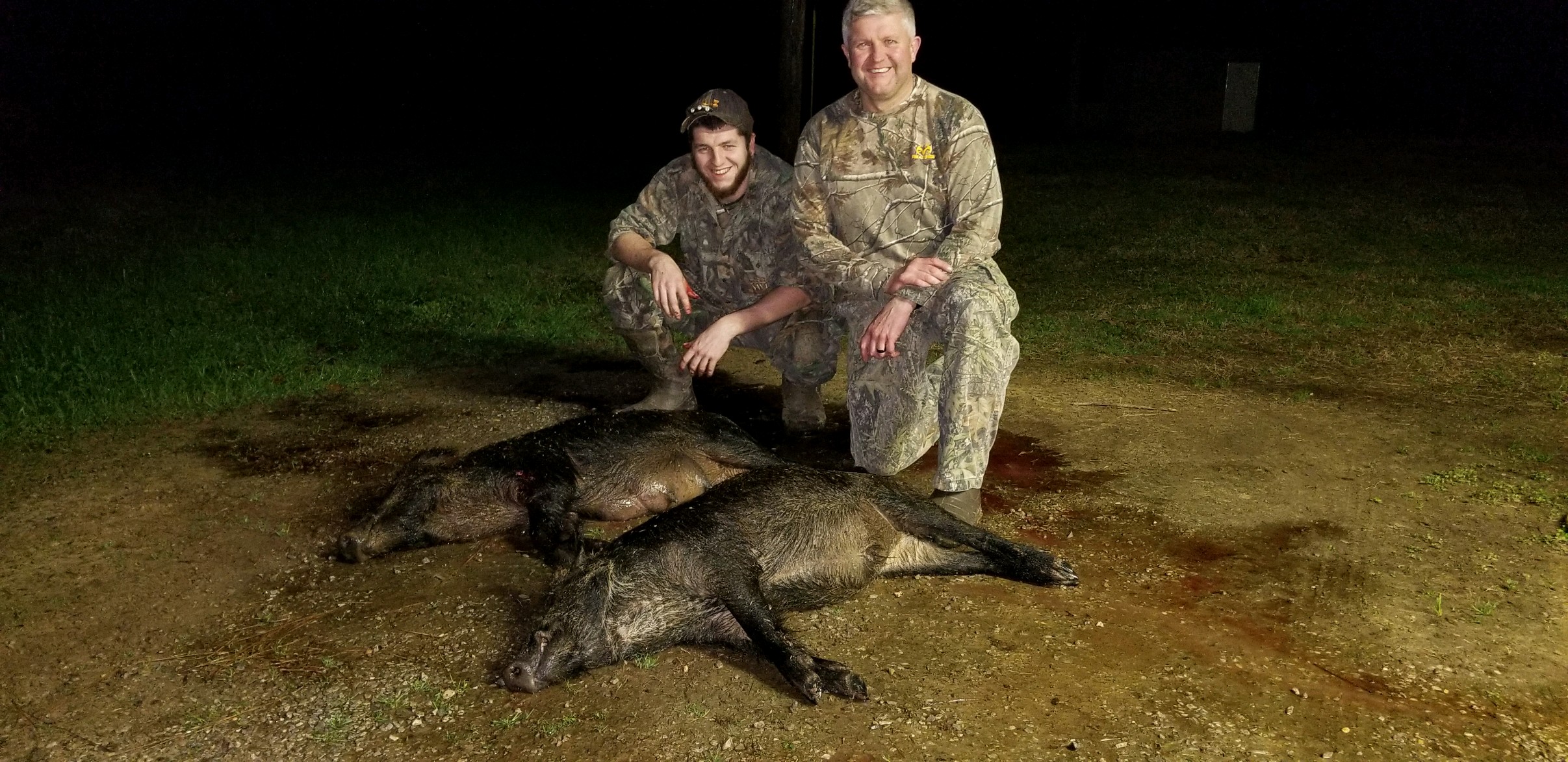When the summer sun scorches the fields and the daytime heat gets brutal, wild hogs adjust their patterns—and smart hunters should too. If you’re serious about bringing home pork in the warmer months, night hunting isn’t just an option—it’s the key to consistent success. This guide dives into field-proven tactics, essential gear, and smart strategies that will keep you cool and effective when the temperature rises and the hogs go nocturnal.
🌙 Why Night Hunting Works in the Heat
As temperatures climb in late spring and early summer, hogs shift into survival mode. These heat-tough critters are surprisingly sensitive to extreme temperatures. During the day, they hole up in thick cover or wallow near shaded water sources. At night, they roam—feeding, rooting, and socializing. That’s your window of opportunity.
Night hunting gives you a shot at more movement, more activity, and more shot opportunities—without sweating through a pair of camo pants in 102° heat.
🧭 Where to Find Them After Dark
1. Water Sources
In dry or humid climates, hogs rarely wander too far from water. Creeks, ponds, wallows, and low-lying wet spots are prime locations. Scout these areas during daylight, and then set up nearby after sunset.
2. Ag Fields & Feeders
Cornfields, peanut fields, and recently cut hay pastures are like midnight buffets for wild hogs. If you’re hunting over a feeder, time your visit just after dark and again around 2–3 a.m.—those tend to be peak movement times.
3. Transition Trails
Use trail cams or pre-season scouting to locate hog travel corridors—especially trails that connect bedding cover to feeding zones. Set up downwind with a clear shot path.
🔦 Essential Gear for Night Hog Hunts
Night hunting is gear-intensive. You need the right setup to see, shoot, and stay stealthy.
✅ Night Vision or Thermal Optics
Thermal scopes (like the Pulsar Thermion or ATN Thor) can spot body heat through thick brush and pitch-black fields. Night vision optics work too, but thermal gives you an edge when visibility is low or hogs are on the move.
✅ Quiet Rifle Setup
A suppressed AR-15 chambered in .300 Blackout or .308 is popular for hogs. Use subsonic ammo if your suppressor supports it—hogs spook fast after a loud shot.
✅ Red or Green Lights
If you’re not running thermal or NV, use a weapon-mounted red or green LED light. Hogs don’t notice colored lights like they do white beams, and you can still get a clean shot.
✅ Good Boots & Snake Protection
Night terrain can be sketchy. Waterproof, snake-proof boots like Trudave’s insulated outdoor boots are a solid choice for muddy, brushy spots that pigs (and snakes) love.
🎯 Tactics That Get Results
🔇 Be Dead Quiet
Every sound is amplified at night. Close your truck doors softly, walk slow, and keep gear noise to a minimum. If you’re running a feeder, don’t slam the gate or rattle your rifle.
💨 Play the Wind—Hard
Hogs have an incredible nose. Approach from downwind, and don’t even think about scented bug spray or deodorant.
🕛 Time It Right
Your best hours are typically 30 minutes after dark until around 3 a.m. If you’ve got the stamina, don’t leave early—many mature boars wait until the cooler end of the night to step into the open.
🐷 Use Bait Strategically
Corn soaked in fruit punch Kool-Aid, diesel (yes, really), or even Jello powder is like crack for hogs. Place it near a known trail and set up with cover, elevation, and a shooting lane.
🧠 Final Thoughts: Patience Pays Off
Night hog hunting in the summer is a mix of preparation, patience, and knowing how pigs behave when the mercury rises. It’s not about luck—it’s about learning the rhythm of your land and staying flexible when the heat turns up. With the right tools and tactics, you can turn sweltering summer nights into prime-time pork season.
So load up your cooler, charge your optics, and get ready—because some of the best hog hunting of the year doesn’t start until the sun goes down.


